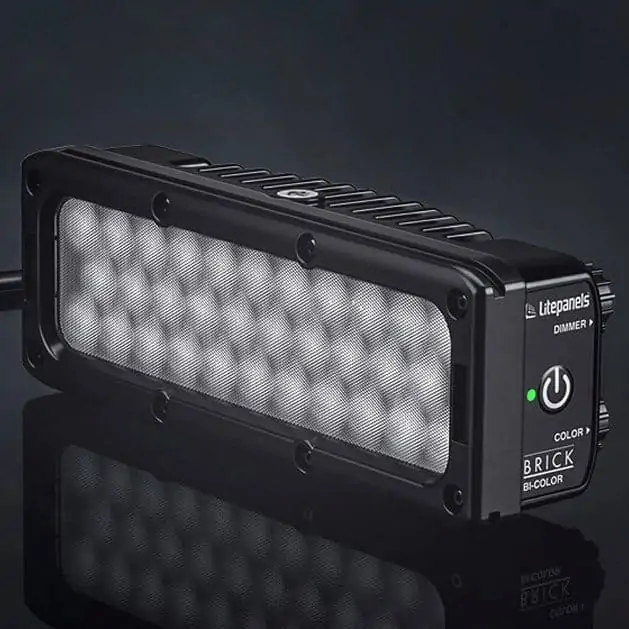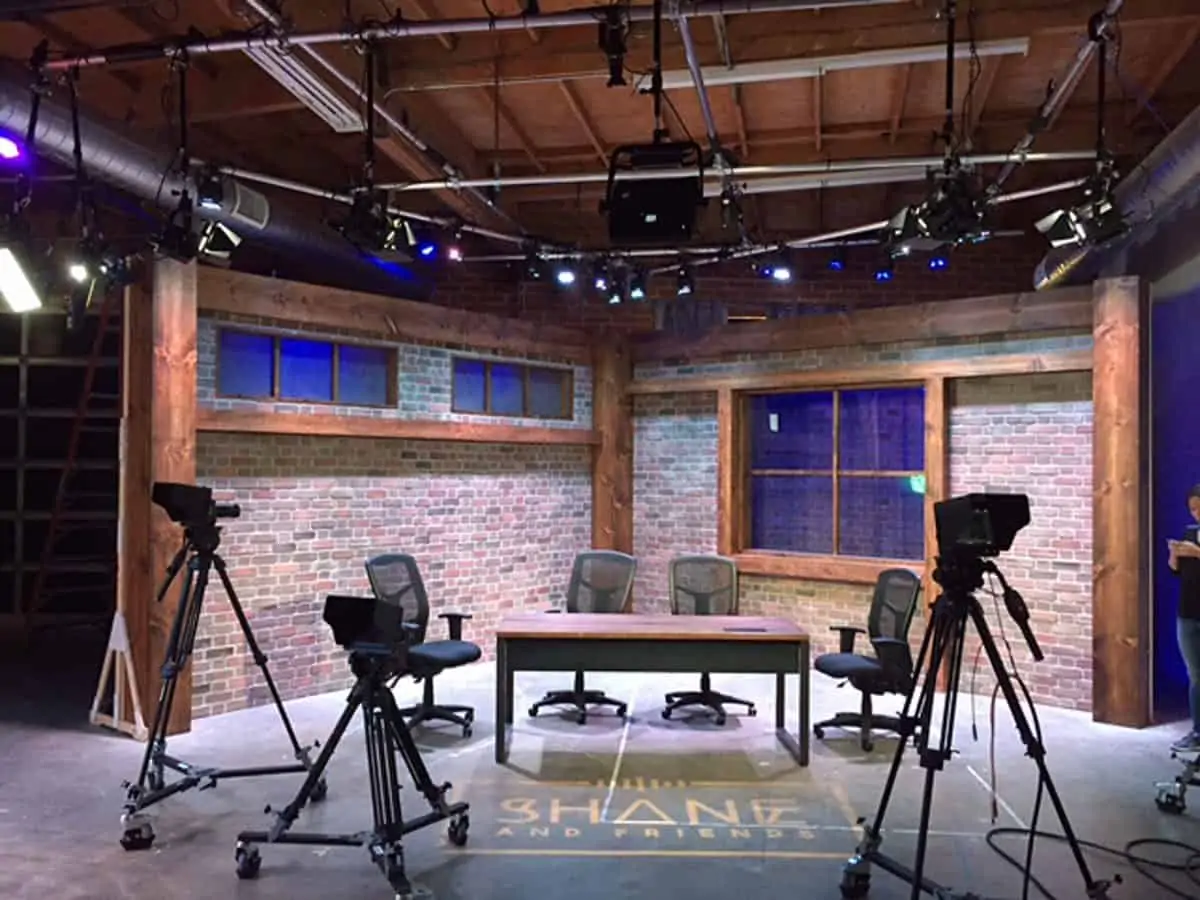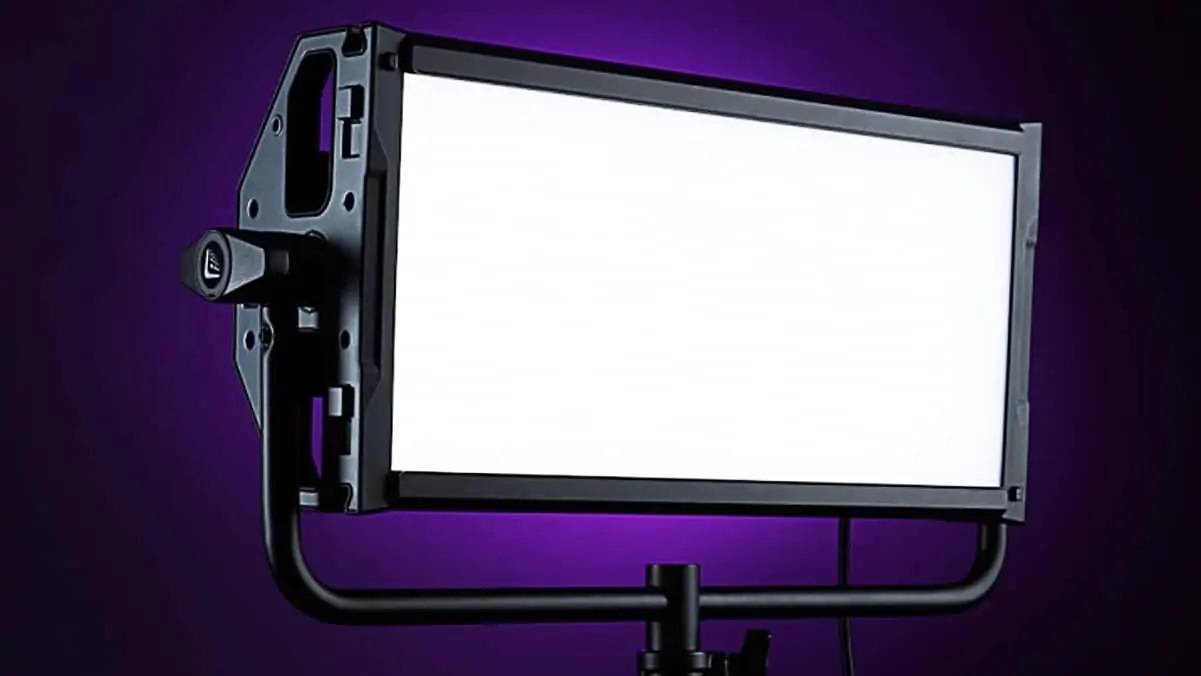Powering ahead
Sticking its head above the parapet in the crowded world of LED lighting is Litepanels – created by gaffers, for gaffers.
At the dawn of filmmaking’s LED revolution – until which point lighting choices were largely limited to HMI or tungsten – an innovative group of Hollywood gaffers and lighting engineers saw their chance to shine. These five men – Pat Grosswendt, Rudy Pohlert, Ken Fisher, Fred Holmes, and Kevin Baxter – adapted this burgeoning technology for use in the studio, and so the original Litepanels 1×1 LED panel was born.
“They saw an opportunity to bring high-quality, reasonably good output, high colour and flicker-free LED lighting to film production,” explains Michael Herbert, head of product at Litepanels’ parent company, Videndum. “While LED lighting had already existed in other areas (commercial and industrial), you couldn’t transpose that kind of technology directly into filmmaking. The founders saw a way to re-engineer the product, and redo the electronics in particular, to make it applicable to the kind of projects they were working on.”
What made the initial panel a success? For starters, its compact profile made it easy to use and quick to rig, crucial for the fast-paced nature of TV and film production. Its eco credentials were also impressive, with lower energy requirements equalling lower running costs to keep producers happy. The light itself – a characteristically soft, HD-friendly fixture – could be infinitely dimmed with no noticeable shift in colour temperature. In all, it was a versatile fixture that proved a hit with crew and talent alike – the latter thanks to the lack of heat generated by the panel, unlike traditional sources.
Since then, the Litepanels range has expanded to include lighting solutions spanning on-camera lights, Fresnels, RGB special effects lighting, and advanced wireless control systems. Recent productions that have taken advantage of the brand’s products include Netflix Stranger Things and Sex Education; what’s more, you’ll even find its fixtures in settings as diverse as the White House Briefing Rooms and the International Space Station!

Making headlines
Litepanels’ products have found international favour in the news and current affairs spheres. “Although the founders came from the cinema industry, the form factor became widely adopted in news very quickly,” says Herbert. “It was adopted by ENG (electronic news gathering) crews in particular. Previously they’d been lugging around small HMI lights and suddenly they had this slim, lightweight LED panel – which, if you’re doing a three-point lighting setup or pitchside interview, works really well.”
Key products offered by the brand include the Astra range, which Herbert notes is “ubiquitous” among North American news crews. Filmmakers may be most familiar, however, with the Gemini series of panels, developed in 2016 to cater to the film lighting sector. The first Gemini panel, the 2×1 soft, was well adopted, and heralded Litepanels’ reemergence into the HETV and film production market.
The brand’s next evolution would be the Gemini hard range. “Now you were working with extremely high output but very lightweight, very low-powered lighting with very high colour quality designed specifically for the cinema production market,” adds Herbert.

Litepanels’ products are designed and engineered in the US, while manufacturing takes place in China. Herbert, who joined the company in 2020 and is based in London, spends at least two hours each day working closely with the transatlantic team, finessing hardware, firmware or electrical developments.
How do Herbert and his team use gaffer and DP feedback to shape their products? “Whenever you have the chance to sit down with a gaffer or DP, you always ask them the same question – what would you like to see next from Litepanels? Chances are, they’ll see something we’re either thinking about or actively working on, which is good,” he comments. “We normally just get a very top-level idea which is likely to align with something we’re already doing. Then I’ll go back to the [DP/gaffer] with some very basic designs and specs and say, this is the kind of route we’re going down, what do you think about that? We’ll continue that process with 3D models, then functionable alpha builds.
“It’s about locking in with a wide range of people, but also people who are able to give you detailed feedback and people who are honest as well. We need to make sure we’re manufacturing stuff that is to the quality and functionality level that these people expect, ultimately, and the only way you can do that is by having consistent involvement with the end user throughout the development process.”

Awards and honours
It’s a process that has stood the brand in good stead over the past 20 years. Indeed, Litepanels was the first lighting company in the history of the Academy of Television Arts and Sciences to receive a Technology and Engineering Emmy. Prior to that, it had been awarded a Primetime Engineering Emmy Plaque and in 2021 it was honoured for the third time with an Emmy for its pioneering development of LED lighting for television production.
Litepanels has been part of the Videndum family since 2008, sitting alongside Quasar Science, which was acquired in 2021. This latest addition has allowed the Videndum team to combine engineering, marketing and sales resource across the two brands, but they are viewed as two complementary products rather than competitors. “You see a lot on the virtual production side of things where we’ll have a bunch of Rainbows from Quasar Science installed overhead, which are doing the extension of the image, but you still need punchy panel lights as well, just to lighten the set,” Herbert says. “You can’t light it with just one brand – you need a combination of both to make it happen.”
It’s this spirit of collaboration, which the brand ignited over two decades ago, that remains key to the brand’s philosophy today.


















